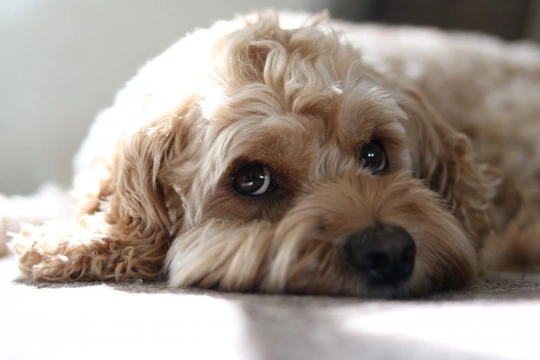
Cockapoo Crate Training: 5 Mistakes to Avoid
Cockapoos are one of the most popular dog types in the UK, being fourth overall and the most popular hybrid or deliberate cross breed by some margin. These friendly, fun-loving dogs are a great fit for families of all types, and fit well into most homes and living situations, settling in well with all sorts of different lifestyles.
However, Cockapoos can also suffer from separation anxiety and this means that you should plan their care and management carefully to avoid making your dog overly clingy or anxious when left alone, and this is something that effective crate training can be a big help with.
Crate training a dog of any type has numerous benefits, including giving them a secure, comfortable space to call their own that they can use to chill out in and spend time along happily and safely. That said, if you go about crate training your Cockapoo in the wrong way, you may end up creating more problems than you prevent – something you will of course be keen to avoid.
Crate training a Cockapoo properly can take time, and needs a reasonable amount of planning and effort. There are a few common crate training mistakes you should make yourself aware of in order to avoid making them with your own dog.
In this article we will look at five mistakes to avoid when crate training your Cockapoo, to give your dog the best start to crate training and avoid problems down the line. Read on to learn more.
Your crate is the wrong size
First of all, choosing the right size of crate is important for dogs, and this is of course something that will vary from dog to dog. A small Cockapoo puppy may make even a small crate look large when they are in it, but remember that puppies grow quickly and choose a crate that will be a good fit for your dog when they are fully grown, or accept that you will need to upgrade the crate later on.
The right size for a dog crate is one in which your dog can stand up comfortably, sit, and lie down stretched out, as well as being able to turn around and generally feel secure but not confined.
Similarly, a crate that is too big for your dog won’t make them feel secure, so there’s a balancing act to achieve when it comes to picking the right size crate.
You try to leave your dog for too long at a time
Crate training effectively will mean that your dog becomes used to and appreciates their crate, and enjoys spending time in it. When your Cockapoo is old enough and has been crate trained fully, you should be able to leave them alone at home happily for up to 3-4 hours at a time in their crate (but not longer).
However, it can take weeks or even months for a puppy to be able to build up to being left for a couple of hours, and trying to rush the process by leaving your Cockapoo for too long too early will set your progress back.
If your dog becomes restless, anxious or needs to go to the toilet and has their needs ignored, they will build up negative associations with the crate, and dislike or even protest against using it in future.
You don’t provide entertainment and stimulus
Your Cockapoo’s crate should be their haven – their bed, safe space, and a place they can go to when they want some peace and quiet. However, their crate also needs to provide things for your dog to entertain themselves with and to divert themselves from potential boredom, and so you should keep some interactive toys in your dog’s crate and also, give them rewards and value for spending time in it.
If time in the crate means your dog will get bored, they will soon become reluctant to use it – and when you do leave your dog in their crate either overnight to sleep or for a couple of hours while you are out, they should be exercised, relaxed, and have had all their needs met first.
Your crate is located in the wrong place or isn’t comfortable
A dog crate should be somewhere quiet that doesn’t normally have a lot of activity going on or a lot of footfall past it, and it should also be comfortable and welcoming for your dog to use. If the area the crate is in is too busy, too hot or cold, or if the crate doesn’t have comfortable bedding and equipment, your dog won’t like it.
You should also ensure that your dog always has access to clean, fresh water when they’re in their crate, and that they can’t knock their water bowl over.
You use crate time as a punishment
Finally, crate training and time spent in the crate should be something your dog is comfortable with, which means that if you use crate time as a punishment, your dog will soon come to view it as such and be reluctant to use it.
It’s fine to use your crate for a time out to calm your dog down, but don’t banish them to their crate or close them away because they’re being naughty or unruly – this will build up negative associations with crating, and put your dog off using their crate happily.



